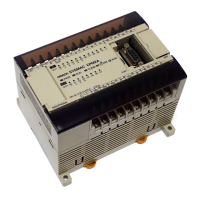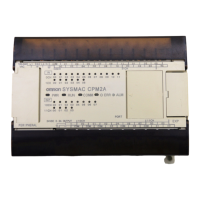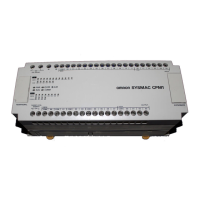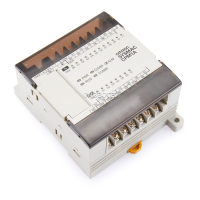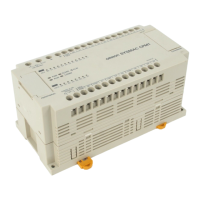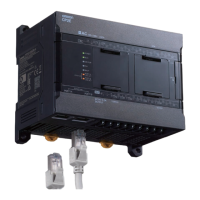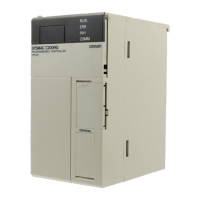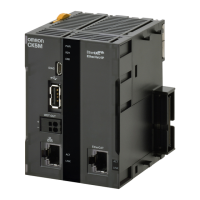161
Programming Console Operations Section 4-2
4-2-2 Clearing Memory
This operation is used to clear all or part of the Program Memory and data
areas, as well as the contents of the Programming Console’s memory. This
operation is possible in PROGRAM mode only.
Before beginning to program for the first time or when installing a new pro-
gram, clear all areas.
All Clear The following procedure is used to clear memory completely, including the
program, all data areas, counter PVs, Data Memory, and the PC Setup (DM
6600 to DM 6655).
1,2,3... 1. Bring up the initial display by pressing the CLR Key repeatedly.
2. Press the SET, NOT, and then the RESET Key to begin the operation.
3. Press the MONTR Key to clear memory completely.
!Caution The PC Setup (DM 6600 through DM 6655) will be cleared when this opera-
tion is performed.
Partial Clear It is possible to retain the data in specified areas or part of the Program Mem-
ory. To retain the data in the HR, TC, or DM Areas, press the appropriate key
after pressing SET, NOT, and RESET. Any data area that still appears on the
display will be cleared when the MONTR Key is pressed.
The HR Key is used to specify both the AR and HR Areas, the CNT Key is
used to specify the entire timer/counter area, and the DM Key is used to spec-
ify the DM Area.
It is also possible to retain a portion of the Program Memory from the first
memory address to a specified address. After designating the data areas to
be retained, specify the first Program Memory address to be cleared. For
example, input 030 to leave addresses 000 to 029 untouched, but to clear
addresses from 030 to the end of Program Memory.
As an example, follow the procedure below to retain the timer/counter area
and Program Memory addresses 000 through 122:
1,2,3... 1. Press the CLR Key to bring up the initial display.
2. Press the SET, NOT, and then the RESET Key to begin the operation.
3. Press the CNT Key to remove the timer/counter area from the data areas
shown on the display. (Counter PVs will not be cleared.)
Unsigned decimal data modifi-
cation
Changes the decimal value of a word being monitored as unsigned decimal
data, within a range of 0 to 65,535. A change into hexadecimal data is made
automatically.
181
Force set/reset Forces bits ON (force set) or OFF (force reset.) 181
Clear force set/reset Restores the status of all bits which have been force set of reset. 182
Hex-ASCII display change Converts word data displays back and forth between 4-digit hexadecimal
data and ASCII.
183
Displaying the cycle time Displays the current average cycle time (scan time.) 183
Reading and setting the clock Reads or sets the internal clock. 184
Name Function Page
RUN MONITOR PROGRAM
No No OK
SET
NOT
RESET
00000MEMORY CLR?
HR CNT DM
MONTR
00000MEMORY CLR
END HR CNT DM
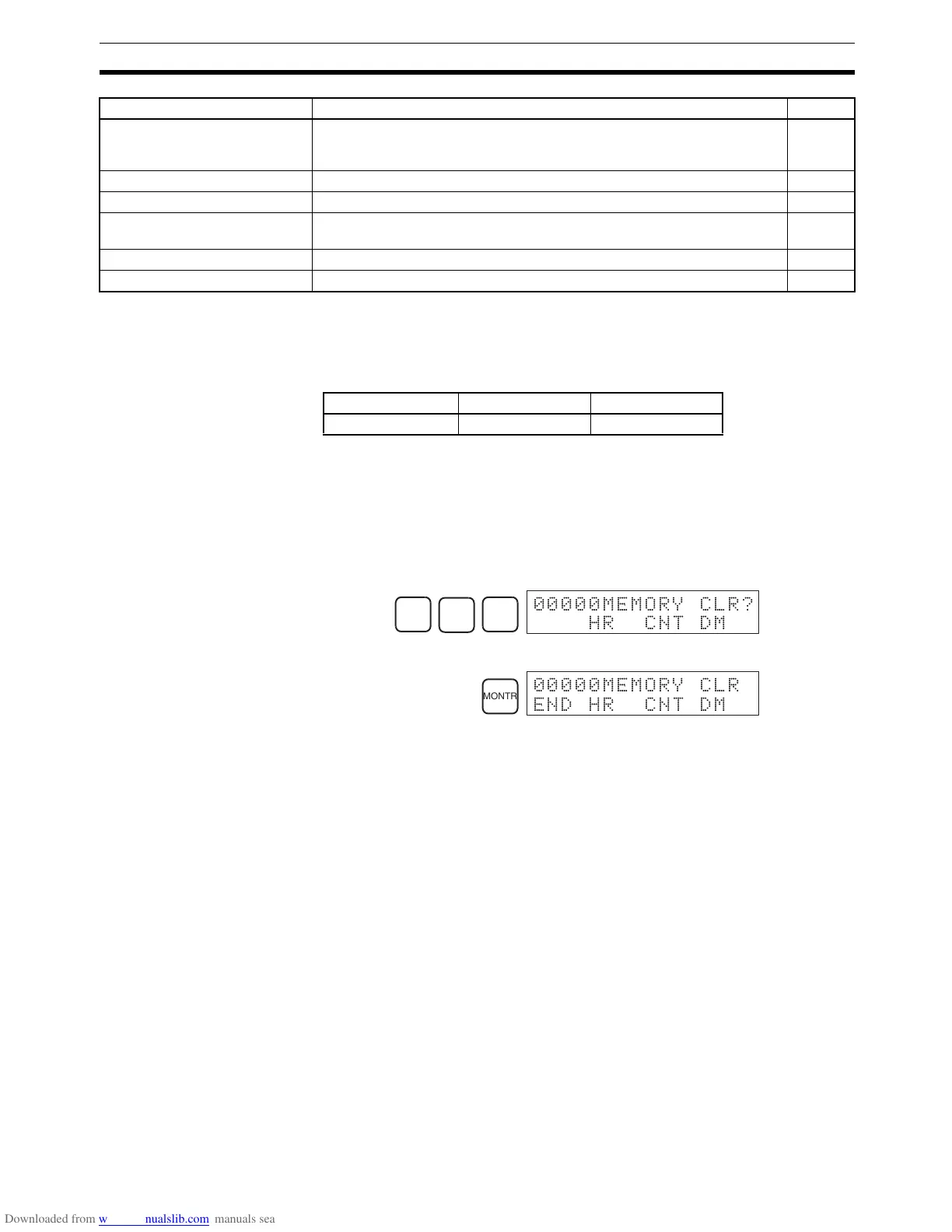